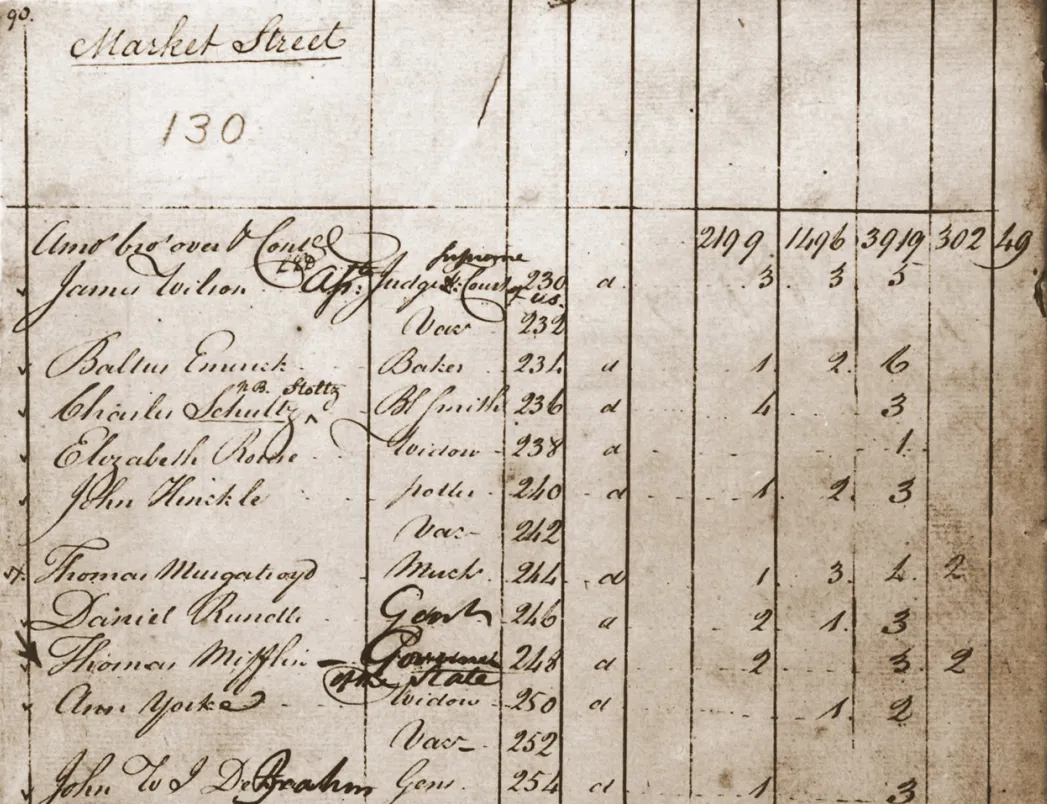A large proportion of all verifiable supercentenarians who have ever lived come from the United States. Approximately 2,000 American supercentenarians born between 1814 and 1913 have been documented so far, and the proportion that are validated is continually increasing.
However, the United States of America is a vast mixture of different states, each with its own systems for recording and keeping documents (Mulcahy & Ford, 2019). This diversity results in the availability of certain documents, such as birth records, in some states but not in others.
While birth records are never the sole form of documentation needed to validate the age of a supercentenarian, they are usually among the strongest forms of documents. This is because they help establish a family relationship between the supercentenarian claimant and their parents, a connection that can only be inferred from other forms of documentation.
In general, civil birth records were not consistently kept in most states until the late 1800s. Some states have church records, such as christening or confirmation records, that can help locate this information. However, for many states, this information is unavailable, necessitating the implementation of alternate strategies.
The U.S. Census
The United States has conducted a census since 1790 (Krieger, 2019), with a decennial schedule. According to the 72-year rule for releasing census records, the most recent publicly available census is the 1950 US Census (United States Census Bureau, n.y.).
The primary purpose of the census is to enumerate the population of the United States and collect essential information about individuals (Winkle, 1994). In the first six census enumerations (1790-1840), only the head of the household was listed, along with notes on age ranges (e.g., 10-14 years old) and status (free white, other free person, or slave).
Starting with the 1850 census, each free person in the household was individually listed with their name and basic descriptors (Winkle, 1994). Over time, the information recorded in census records has expanded to capture key sociodemographic aspects of the population.
Most census records have been well-preserved and are publicly accessible. Unfortunately, a significant portion of the 1890 census was lost in a fire in 1921 (Winkle, 1994; United States Census Bureau, 2021).
Using census records to validate supercentenarians
For many American supercentenarians, an entry in the census is often the earliest available document, and in many cases, it may be the only early-life document stating an actual age for the person. This makes the census crucial for verifying claims with higher certainty.

Delina Filkins (1815-1928) on her 113th birthday. Photo source: FindAGrave
Early supercentenarians like Louisa Thiers (1814-1926) and Delina Filkins (1815-1928) can be proxy-validated using the 1820 and 1830 censuses (both listed as under ten in 1820 and 15-19 in 1830). Although not mentioned by name, family reconstruction has allowed for the identification of these individuals and validation of their age claims. No other validated American supercentenarians born before 1840 have been identified in the pre-1840 census records.
Considering that the number of supercentenarians increased rapidly in cohorts born after 1880, the loss of almost the entire 1890 census poses a significant challenge. For supercentenarians without another document (birth record, state census, etc.), there might be a gap of up to 20 years between their birth and the first time they are documented in the 1900 census (enumerated as of June 1).

Sarah Knauss (1880-1999). Photo source: aginganalytics.com
Sarah Knauss (1880-1999) was for a long time viewed with some skepticism, having been born in September 1880 but first appearing in the Census in 1900, meaning that she was a grown woman at the time. Considering that people can exaggerate their ages for a variety of reasons, especially once they are nearing adulthood (for example to get married or enlist in the army), the Sarah Knauss claim was therefore viewed by some with slight skepticism. I personally located Knauss in an 1894 church book entry where she had taken communion, but no age was given in this entry. Neither was an age given in the index in the church book from about 1888, where Knauss and her family members were listed. As luck would have it however, a recent discovery of a transcription of the 1890 census for the area Knauss and her family lived in that had been made in 1891 stated that Knauss was ten years old at the time.
While some supercentenarian claimants may be fortunate to have their 1890 census documents transcribed, others may only have documents where they were close to adulthood. The question arises: Is such a document sufficient? Arguments exist on both sides, with some advocating for a stricter “10-year rule,” while others are more lenient with a “20-year rule.”

An example of an index to documents that are available for some American supercentenarians. Note the inconcistencies in age reporting in some of the rows.
Complicating the validation process is the fact that some supercentenarians were either missed in their earliest census records or enumerated with an age inconsistent with their age claim. Mid-life census records, particularly for female supercentenarians, often exhibit mild to severe age deflation. An unvalidated (but documented) example involves a woman claiming to be 17 years younger in the 1920 census than indicated by her earliest document (1880 census) and later-life claims. Notably, the 1900 census stands out as the only census record recording a person’s month and year of birth instead of their age. Many supercentenarians also have a month of birth listed in 1900 that is inconsistent with later-life claims.
The question arises: How much credibility should be given to census records? While they are generally useful to gain insight into whether a person was a supercentenarian, caution is necessary in interpretation. When the supercentenarian claimant did not respond directly, minor inconsistencies may arise, such as a relative misremembering the month or year of their relative’s birth. Thorough validation requires constructing an overarching life story using all available documents, interpreting and weighing each document together.

An example of a U.S. census entry, in this case the 1900 census for Katie Hatton (1877-1992). Note that Hatton (Dolly) is listed as being three years older than claimed, which showcases that the census isn’t always 100% reliable.
A unique scenario arises when a census record supports a supercentenarian being older than claimed. My professional opinion is that to upgrade a deflated supercentenarian claim, two consecutive early-life census records (issued before the age of 20) supporting a higher age are needed, without another early document contradicting them. However, it’s important to note that not all researchers share this view.
The SSDI and SS-5
The Social Security Death Index (SSDI) serves as a valuable document for confirming that a person indeed reached the age of 110. However, caution must be exercised in interpreting the SSDI due to instances of ‘ghost cases,’ where a person passed away decades earlier but was only officially registered as deceased at a later date. The index is compiled from a death master file and includes most individuals with a social security number at the time of death (Hill & Rosenwaike, 2001/2002). Covering the time span from 1962 to 2014, recent entries are restricted from public access.
Social Security card application forms (SS-5) also play a crucial role as genealogical tools. These forms often contain information such as the names of a person’s parents and their place of birth. The relatively recent release of SS-5 forms on genealogical websites has facilitated more in-depth research on previously validated supercentenarians. Information from SS-5 forms has helped debunk claims associated with two individuals, Lucy Hannah (1875?/1894?-1993) and Mathew Beard (1870?/1886-1985), who were previously considered supercentenarians.
Other forms of documentation
As mentioned earlier, the United States comprises numerous states, each with its unique set of available documentation. States like New York and New Jersey, for instance, maintained state censuses, while others, like Mississippi, had school censuses. Marriage records spanning various periods from the 19th to the 20th century are accessible in most states. Immigration records are available in the form of passenger lists and naturalization records for some states. Additionally, some states have public address registers for late-life documentation.
Conclusion
In conclusion, although not necessarily as extensive as the documentation found in certain European countries, the United States possesses a diverse array of records that allows for robust age validation of supercentenarians.
References
Hill, M. E., & Rosenwaike, I. (2001/2002). The Social Security Administration’s Death Master File: The Completeness of Death Reporting at Older Ages. Social Security Bulletin, 64(1).
Krieger N. (2019). The US Census and the People’s Health: Public Health Engagement From Enslavement and “Indians Not Taxed” to Census Tracts and Health Equity (1790-2018). American journal of public health, 109(8), 1092–1100. https://doi.org/10.2105/AJPH.2019.305017
Mulcahy, B. L. & Ford, C. (2019). Family History – A Concise Beginner’s Overview. Fort Myers Regional Library. https://www.leegov.com/library/Documents/Family-History-Concise-Beginner-Overview.pdf
United States Census Bureau. (n.y.) The “72-Year Rule.” Retrieved 2023-12-17 from: https://www.census.gov/history/www/genealogy/decennial_census_records/the_72_year_rule_1.html
United States Census Bureau. (2021) January 2021. Retrieved 2023-12-17 from: https://www.census.gov/history/www/homepage_archive/2021/january_2021.html
Winkle, K. J. (1994). The United States Census and Community History. The History Teacher, 28(1), 87-101. https://doi.org/10.2307/494293





